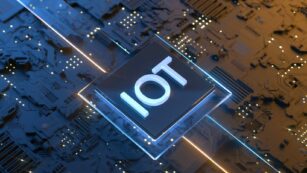In the bustling digital age, the Internet of Things (IoT) has become more than just a buzzword. It’s a revolutionary concept that’s transforming how we interact with the world around us. From smart homes to intelligent transportation systems, IoT connectivity is reshaping our everyday experiences, making them more efficient, convenient, and smart.
Internet of Things Connectivity
Internet of Things Connectivity, herein referred to as IoT connectivity, forms a crucial layer of the IoT architecture. Essentially, it acts as the lifeblood of the IoT framework, underpinning the interconnection of devices and systems. IoT connectivity warrants an exploration of key concepts and the inherent benefits that accompany the seamless connection of devices.
Key Concepts and Definitions
 IoT connectivity posits a setup where devices or “things” form a network, interlinking through the internet. Deemed as smart devices, they communicate, collect, and process data. Examples comprise wearable technology, smart homes, and interconnected vehicles. They rely on internet access for data exchange and an embedded system for on-device processing. Apart from IoT devices, there are other constituents to recognize in the IoT connectivity puzzle, each playing a specific role.
IoT connectivity posits a setup where devices or “things” form a network, interlinking through the internet. Deemed as smart devices, they communicate, collect, and process data. Examples comprise wearable technology, smart homes, and interconnected vehicles. They rely on internet access for data exchange and an embedded system for on-device processing. Apart from IoT devices, there are other constituents to recognize in the IoT connectivity puzzle, each playing a specific role.
- Internet Protocol (IP) address: Each device or “thing” in the IoT needs an IP address. It’s a unique identifier allowing the device to connect to and communicate over the internet.
- Routers: These devices direct the information flow between the internet and the “things” in the network.
- Gateway: It’s a hardware device bridging the gap between IoT devices and the internet.
- Cloud servers: They act as the receivers and processors of the data collected from the “things.”
Benefits of IoT Connectivity
IoT connectivity unfolds numerous benefits, across a multitude of sectors, revolutionizing the way we live, work, and interact. The list below presents key benefits:
 Enhanced efficiency: IoT-connected systems amass vast volumes of data, culminating in evidence-based insights and smarter decision-making, which in turn, boosts efficiency.
Enhanced efficiency: IoT-connected systems amass vast volumes of data, culminating in evidence-based insights and smarter decision-making, which in turn, boosts efficiency.- Improved Customer Experience: With IoT connectivity, businesses can tailor customer experiences, detecting patterns in customer behavior and personalizing service provision accordingly.
- Predictive Maintenance: IoT connectivity allows for real-time monitoring of systems, facilitating early detection of faults and, as a result, prompt repairs.
- Increased safety: IoT connectivity can enhance safety measures, from secure home systems to healthcare monitoring devices.
Key Technologies Behind IoT Connectivity
Taking a step further and diving into the heart of Internet of Things (IoT) connectivity, it’s evident that several key technologies power this revolutionary communication framework.
RFID Technology
Radio Frequency Identification (RFID) technology stands as a silent powerhouse in IoT connectivity. RFID tags, tiny devices that contain a microchip and an antenna, play a vital role. They hold specific information about the item they’re attached to. For instance, in a shipment of goods, RFID tags carry data like product name, manufacture date, or shipping details.
RFID readers, another segment of this technology, retrieve this data by sending a radio wave to the tag. The tag responds with the information stored on its chip. RFID operates without a need for direct line of sight or physical contact, making it suitable for various IoT applications such as inventory tracking, access control, and even smart agriculture.
Wi-Fi and Bluetooth Connections
 Wi-Fi and Bluetooth stand as general-purpose technologies supporting IoT connectivity. Wi-Fi, with its high data rate and relatively long-range, proves ideal for home automation and urban IoT applications. For example, it enables smart surveillance cameras to transmit high-definition video data to cloud servers for processing.
Wi-Fi and Bluetooth stand as general-purpose technologies supporting IoT connectivity. Wi-Fi, with its high data rate and relatively long-range, proves ideal for home automation and urban IoT applications. For example, it enables smart surveillance cameras to transmit high-definition video data to cloud servers for processing.
Bluetooth, on the other hand, excels in short-range, low-power IoT applications. Bluetooth Low Energy (BLE) – a power-efficient variant – came into existence as a solution for battery-powered IoT devices.
Challenges in IoT Connectivity
Gaining momentum from the previous discussion, IoT connectivity does experience challenges. High deployment cost poses a significant hurdle, as investment in IoT infrastructure doesn’t come cheap. Similarly, interoperability issues arise when devices from various manufacturers fail to communicate effectively. Furthermore, data security remains crucial as IoT devices, being interconnected, make attractive targets for cyberattacks. Lastly, maintaining quality of service (QoS) — a determinant factor for real-time IoT applications — can prove difficult due to bandwidth limitations and unreliable internet connections in certain areas. In essence, while Internet of Things connectivity offers transformative potential, it’s equally bogged down by crucial hurdles that demand resolutions.

